Indonesia haze may have led to 100,000 premature deaths, says report
- Published
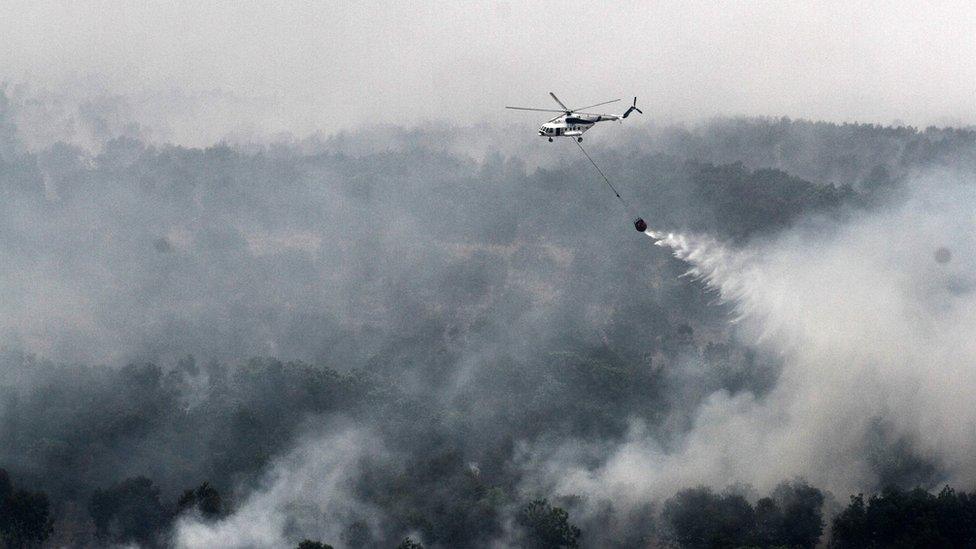
Despite criticism of Indonesia, its population bore the brunt of the smoke's effects
A haze caused by deliberately started forest fires in Indonesia may have caused 100,000 premature deaths last year, according to US research.
More than 90% were in Indonesia itself, with the rest in Malaysia and Singapore, concluded the study by Harvard and Columbia universities.
The pollution occurs each year, and is caused by the burning of forests and peat lands to clear them for crops.
The smoke drifts across South East Asia. In 2015 it lasted several months.
Indonesia has repeatedly been accused of not doing enough to tackle the problem, but says it has stepped up efforts to prevent the fires being started.
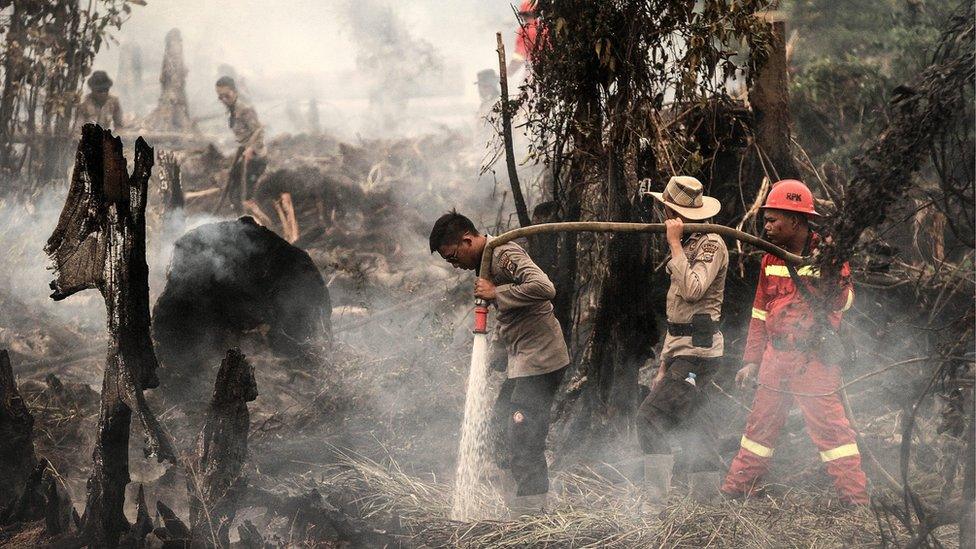
Some fires were accidental or caused by legal small-scale burning but many of the biggest were not
The study, to be published in Environmental Research Letters, used satellite data and computer modelling of health effects to determine the statistical probability of early deaths.
It said the risk ranged from 26,300 to 174,300 deaths, with 100,300 as the average.
It looked only at the health impact on adults, despite widespread reports of infant deaths, and only at the effects of PM2.5, the fine particulate matter carried by the smog which can get into lungs.
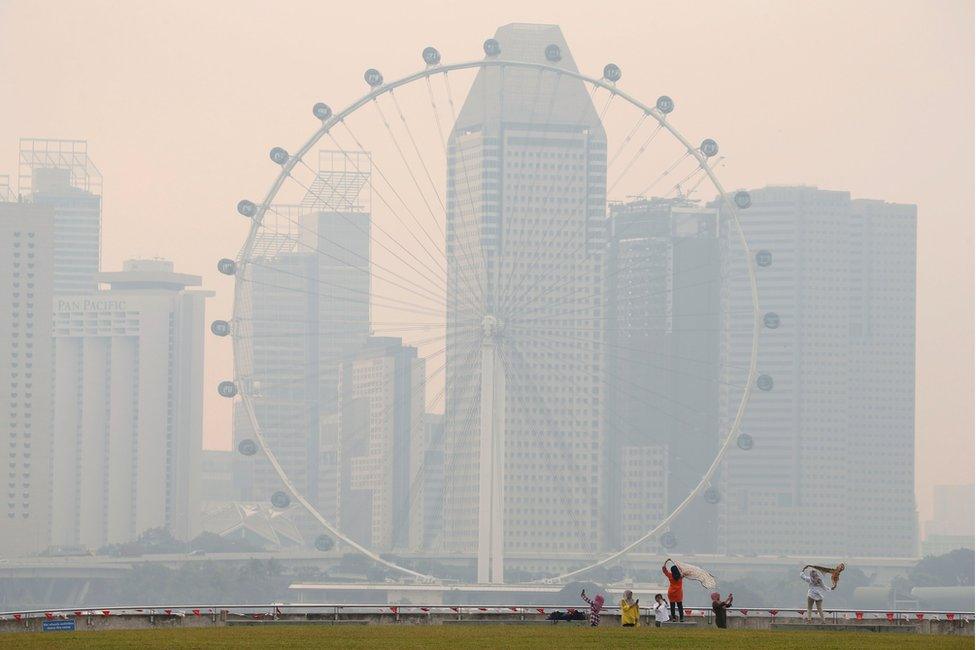
While far less than in 2015, when El Nino exacerbated dry conditions, haze still reached Singapore in August this year
Indonesia's official death toll from last year's burning - the worst since 1997 - is 19, which includes fire fighters.
But its disaster management agency has said more than 43 million Indonesians were exposed to the smoke and that half a million suffered acute respiratory infections, in addition to the economic damage caused.
Academics and environmentalists have said that, even with caveats, the conclusions from the new research were a "wake-up call".
"If nothing changes, this killer haze will carry on taking a terrible toll, year after year," Greenpeace Indonesia forest campaigner Yuyun Indradi told AFP.
"Failure to act immediately to stem the loss of life would be a crime."
This year, the ASEAN Specialised Meteorological Centre, external (ASMC) reports that, after a spike in early September, the number of "hotspots", indicating major fires seen by weather satellites, has fallen to below 20. Far fewer than last year.
- Published16 September 2019
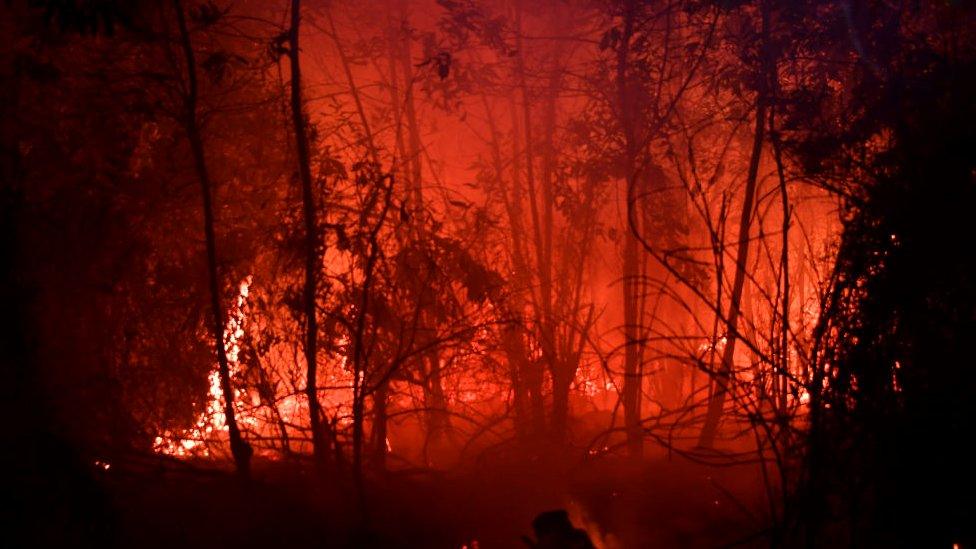
- Published26 August 2016
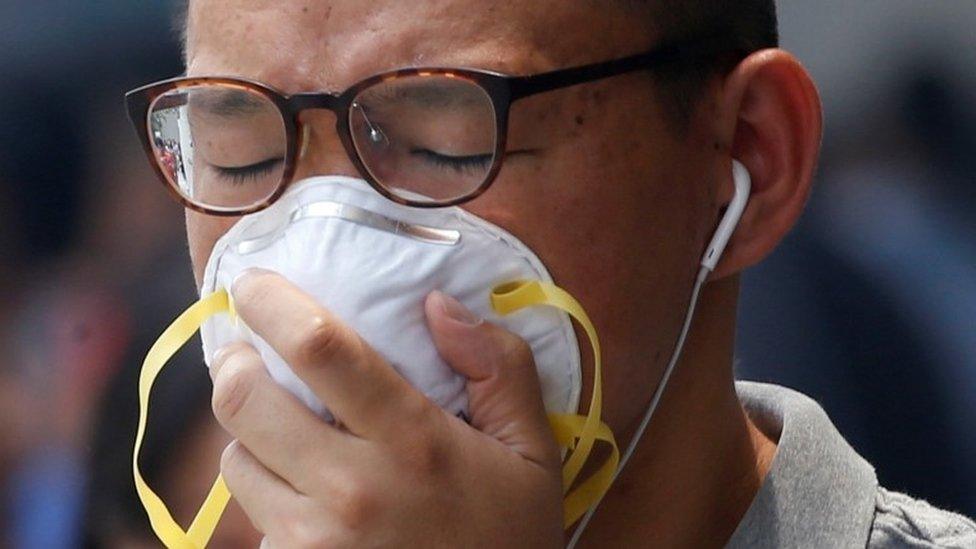
- Published12 October 2015
- Published8 October 2015
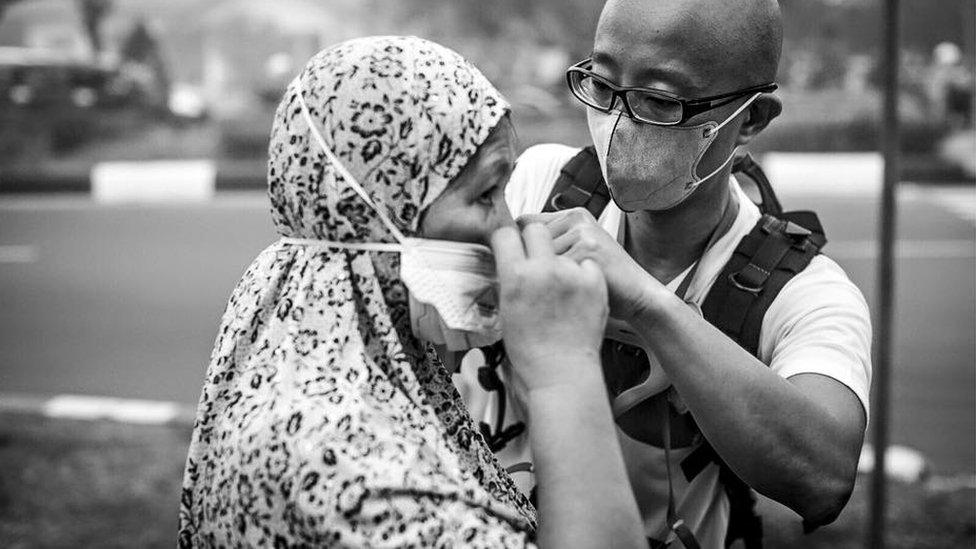
- Published2 October 2015
